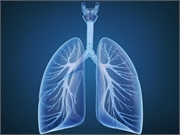CT findings include consolidation, bilateral and peripheral disease, greater total lung involvement
MONDAY, March 2, 2020 (HealthDay News) — The main computed tomography (CT) findings in coronavirus disease-19 (COVID-19) are ground-glass and consolidative pulmonary opacities, and these findings are more frequent with longer time from symptom onset, according to a study published online Feb. 20 in Radiology.
Adam Bernheim, M.D., from the Icahn School of Medicine at Mount Sinai in New York City, and colleagues conducted a retrospective study in which 121 chest CTs of symptomatic patients infected with COVID-19 from four centers in China were reviewed. Common CT findings were examined in relation to the time between symptom onset and initial CT scan (early: zero to two days; intermediate: three to five days; and late: six to 12 days [36, 33, and 25 patients, respectively]).
The researchers found that bilateral and peripheral ground-glass and consolidative pulmonary opacities were the hallmarks of COVID-19 infection on imaging. Overall, 56 percent of early patients had a normal CT. CT findings, including consolidation, bilateral and peripheral disease, greater total lung involvement, linear opacities, “crazy-paving” pattern, and the “reverse halo” sign, were more frequent with a longer time after symptom onset. Bilateral lung involvement was observed in 28, 76, and 88 percent of early, intermediate, and late patients, respectively.
“Recognizing imaging patterns based on infection time course is paramount for not only understanding the pathophysiology and natural history of infection, but also for helping to predict patient progression and potential complication development,” the authors write.
Copyright © 2020 HealthDay. All rights reserved.








